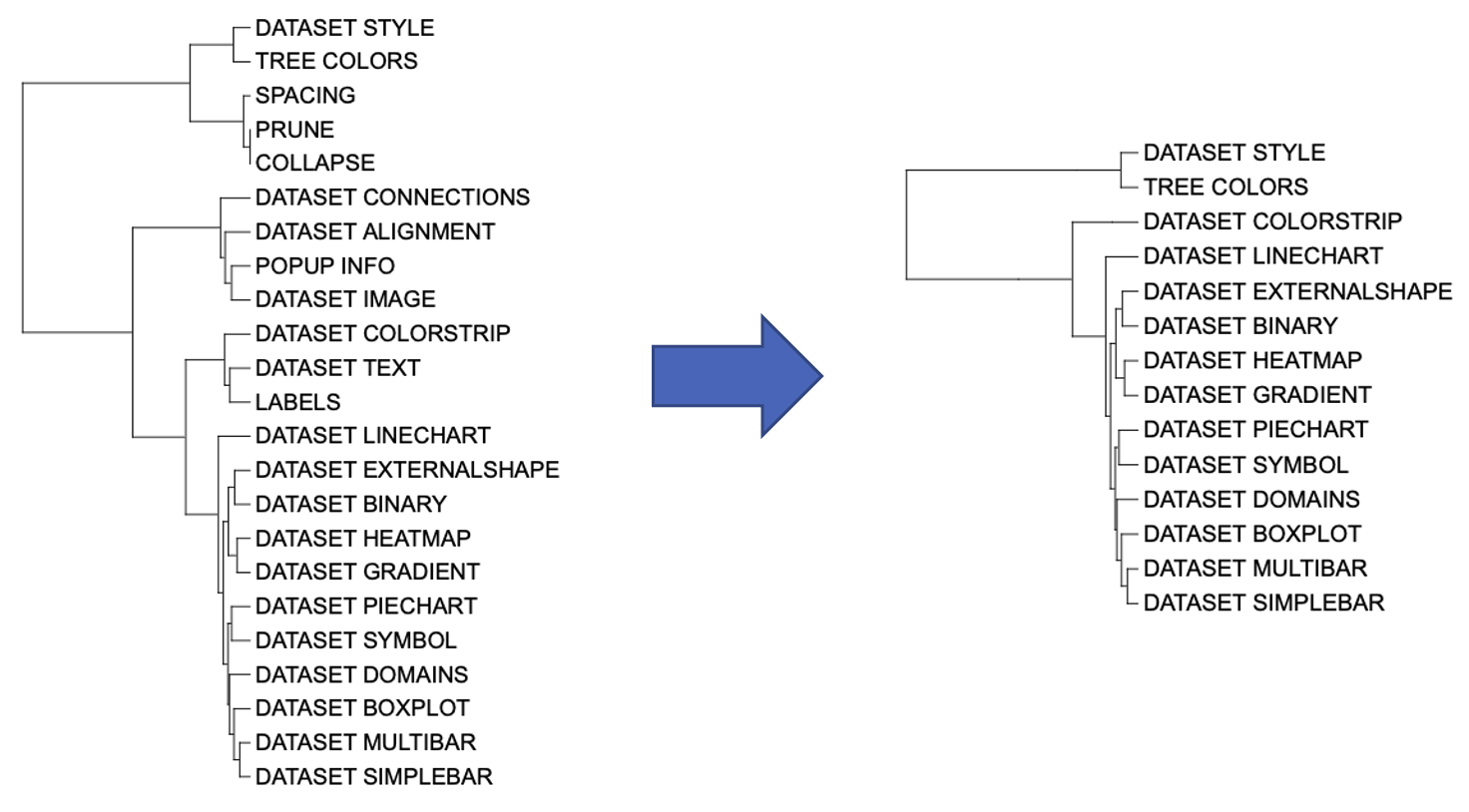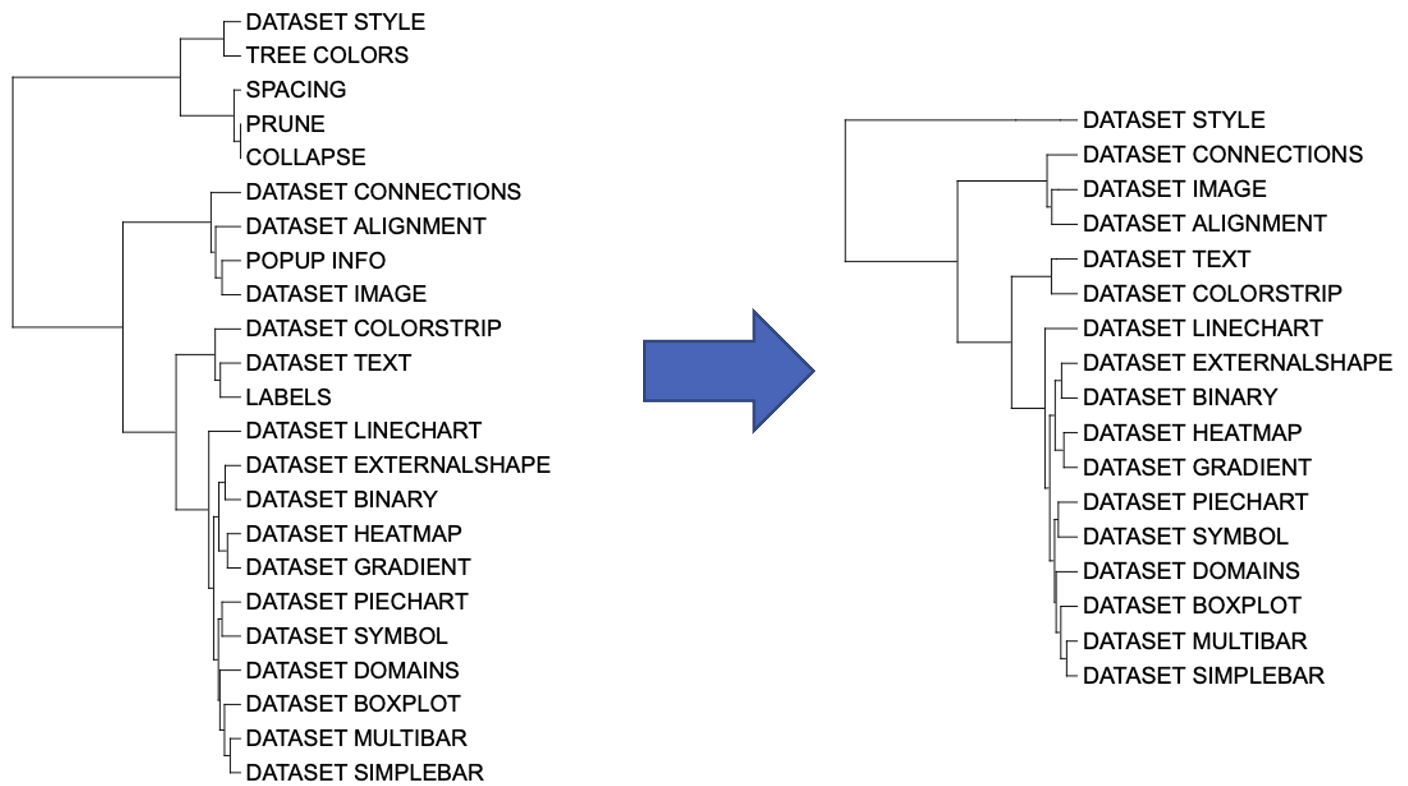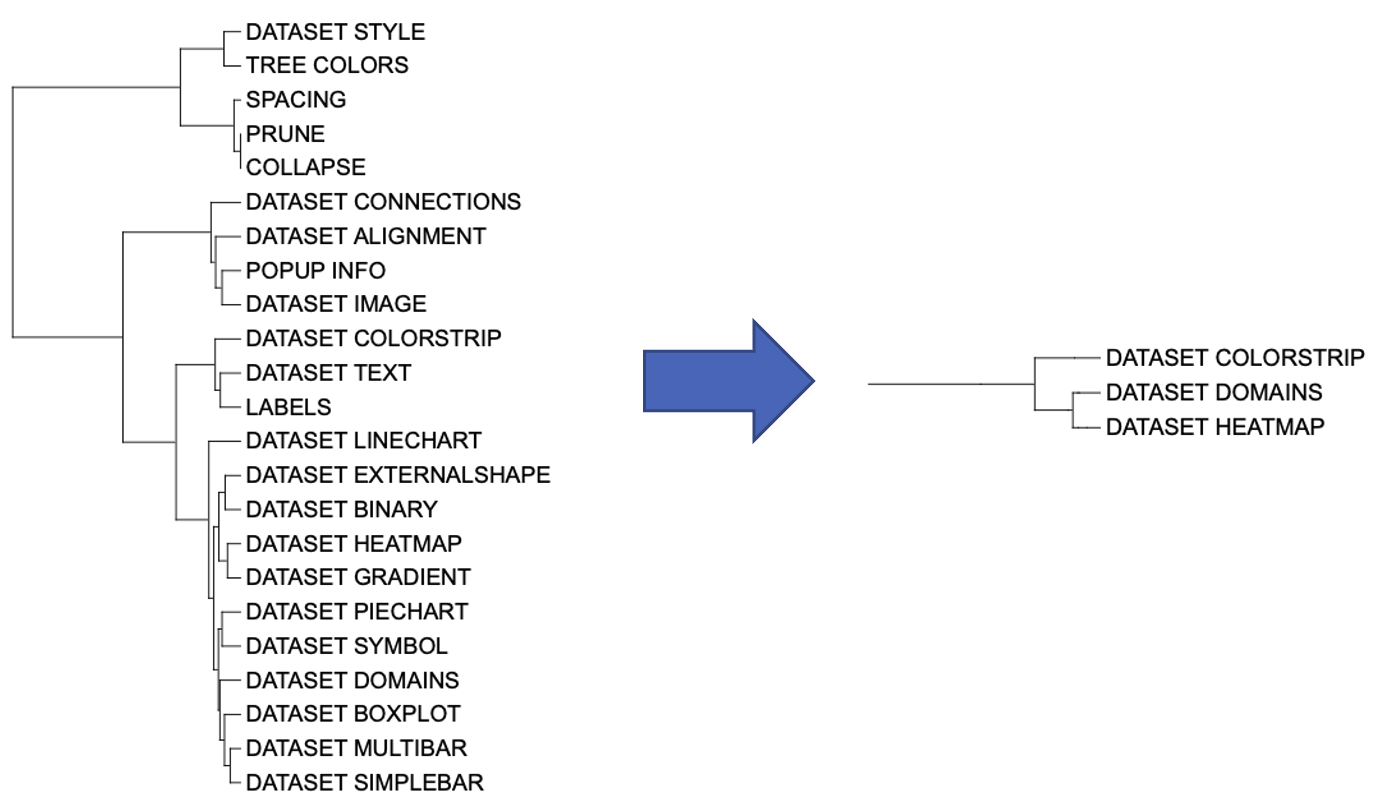Introduction
The function of the PRUNE template is to select
branches. The PRUNE template belongs to the “Tree
structure” class (refer to the Class for detail
information).
Generally, users can select one branch or all branches within a node by entering the branch or node name. The selected branch will be included in the new phylogenetic tree, while the unselected branch will be excluded. This function is the only template function that changes the number of branches.
This section shows how to select branches in itol.toolkit. The process is very simple, and the main difficulty is that the user needs to determine which branches to be filtered. Without itol.toolkit, users have to perform data analysis and visualization preparation in fragmented environments. The itol.toolkit provides consistency to the workflow, allowing users to filter branches and output template files seamlessly.
Prune nodes
This section uses dataset 1 as an example. (refer to the Dataset for detail information)
The first step is to load the newick format tree file
tree_of_itol_templates.tree and its corresponding metadata
df_frequence and
template_parameters_count.
The purpose of data processing in this section is to demonstrate how to select labels to be pruned according to users’ demands.
library(itol.toolkit)
tree <- system.file("extdata",
"tree_of_itol_templates.tree",
package = "itol.toolkit")
df_frequence <- data.table::fread(system.file("extdata",
"templates_frequence.txt",
package = "itol.toolkit"))
data("template_parameters_count")We can use both node and branch names to filter branches. For example, select the two types of templates that are most commonly used and have the most complex parameters: “theme_style” and “basic_plot”.
ids <- df_frequence$templates
df_frequence[df_frequence > 1] <- 1
df_frequence$templates <- ids
most_used_tip = df_frequence$templates[which.max(rowSums(df_frequence[,-1],
na.rm = T))]
select_item = c(most_used_tip, "theme_style","basic_plot")
unit_3 <- create_unit(data = select_item,
key = "E003_prune_1",
type = "PRUNE",
tree = tree)
write_unit(unit_3)
Prune example 1: Most used and complex templates
We can also filter branches according to their names. For example, E004 selects branches beginning with “DATASET_”, which typically have complex parameter and format template requirements.
select_tip = hub@tree$main$tip.label[startsWith(hub@tree$main$tip.label,
"DATASET_")]
unit_4 <- create_unit(data = select_tip,
key = "E004_prune_2",
type = "PRUNE",
tree = tree)
write_unit(unit_4)
Prune example 2: DATASET_ branches selection
We can also filter branches based on other information. For example,
we used template_parameters_count data to filter templates
with more than 30 parameters in unit_5.
tpc <- template_parameters_count
select_tip = row.names(tpc)[rowSums(tpc) > 30]
unit_5 <- create_unit(data = select_tip,
key = "E005_prune_3",
type = "PRUNE",
tree = tree)
write_unit(unit_5)
Prune example 3: Templates with more than 30 parameters
Note
As the only function that changes the topology of a tree,
PRUNE typically exists in the pre processing stage of a
workflow, so it cannot be reflected in published papers. However, R
language users are more likely to use ape::drop.tip to
achieve this requirement, so the application prospects of this template
are worrying. Unless users need to avoid relying too much on tools, it
is possible to use this function on demand.